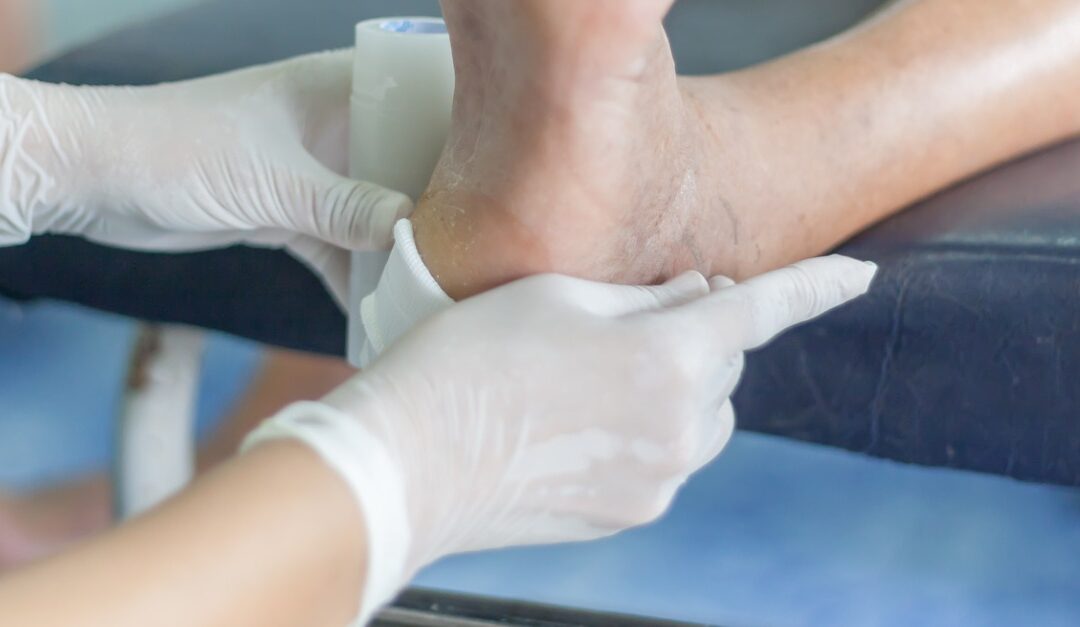Diabetic ulcers are open sores which commonly develop on the feet. Anyone who has diabetes can develop an ulcer, which forms as a result of combined factors such as decreased circulation and limited sensation. Vascular diseases can further complicate ulcers by impeding healing abilities and increasing the risk for infection.
Fortunately, serious ulcer complications, such as the need for amputations, can often be avoided with the right care. Here’s a closer look into how diabetic ulcers can be managed effectively.
Treatment Approaches for Diabetic Ulcers
First and foremost, the goal for treating any diabetic foot ulcer is to heal the wound as quickly as possible. There are several strategies to facilitate this:
Infection Prevention
Preventing infection is critical to reducing the risk of complications from diabetic ulcers. Controlling blood glucose is one important step, as elevated levels can impede healing. You should also clean the wound and change the bandage or dressing daily, and avoid going barefoot, even around the house.
Offloading
Offloading is the process of reducing pressure put on the ulcer to accelerate healing. Healthcare providers may recommend braces, casts, special shoes, wheelchairs, or crutches to aid in pressure reduction. Sometimes, compression therapy, such as the use of compression stockings or bandages, may also be recommended.
Debridement
In some cases, a provider may need to perform debridement to remove dead skin and tissue around the ulcer. In this minor surgery, the wound is cleaned and disinfected, and all dead tissue is removed until only viable tissue remains. “The resulting sore will be bigger and deeper than the original ulcer,” acknowledges Vicky Bryan, “but should be more likely to heal.”
Wound Dressings & MedicatioN
There are several types of dressings that can be used for ulcers. Contrary to the belief that exposing a wound to air facilitates healing, we now know that keeping an ulcer covered and moist actually promotes faster recovery and reduces the risk of infection.
This is why it’s important to follow wound care recommendations precisely. For instance, your provider may recommend wet-to-dry dressings, which absorb wound material as they dry and remove dead tissue when taken off. Some dressings also contain medicine, such as hydrogel or hydrocolloid dressings. Your wound care specialist will provide instructions on how often to change the dressing and what type to use.
Special Treatment for Larger Diabetic Ulcers
Many diabetic ulcers can be treated through minimally invasive approaches. In some cases, more significant treatment may be needed. Several surgical techniques can promote healing, such as vacuum-assisted closure and skin grafts for larger wounds that are unable to close on their own.
Can Diabetic Ulcers Be Prevented?
The best way to tend to diabetic ulcers is to prevent them from happening in the first place. “Wearing shoes that fit properly, controlling your blood sugar, keeping your feet clean, and inspecting your feet for any changes can help to reduce your risk,” advises Vicky Bryan. Even seemingly minor issues, such as cracks, blisters, redness, and cuts could develop into an ulcer if left unaddressed. Any foot problem that doesn’t heal on its own within several days should therefore be assessed by a healthcare professional.
To thoroughly treat diabetic ulcers, it’s always best to work with a vascular surgeon. Our team has specialized expertise in wound treatment, including preventing infections and other complications. To schedule an appointment with our wound care experts, connect with us online or call (770) 423-0595.





